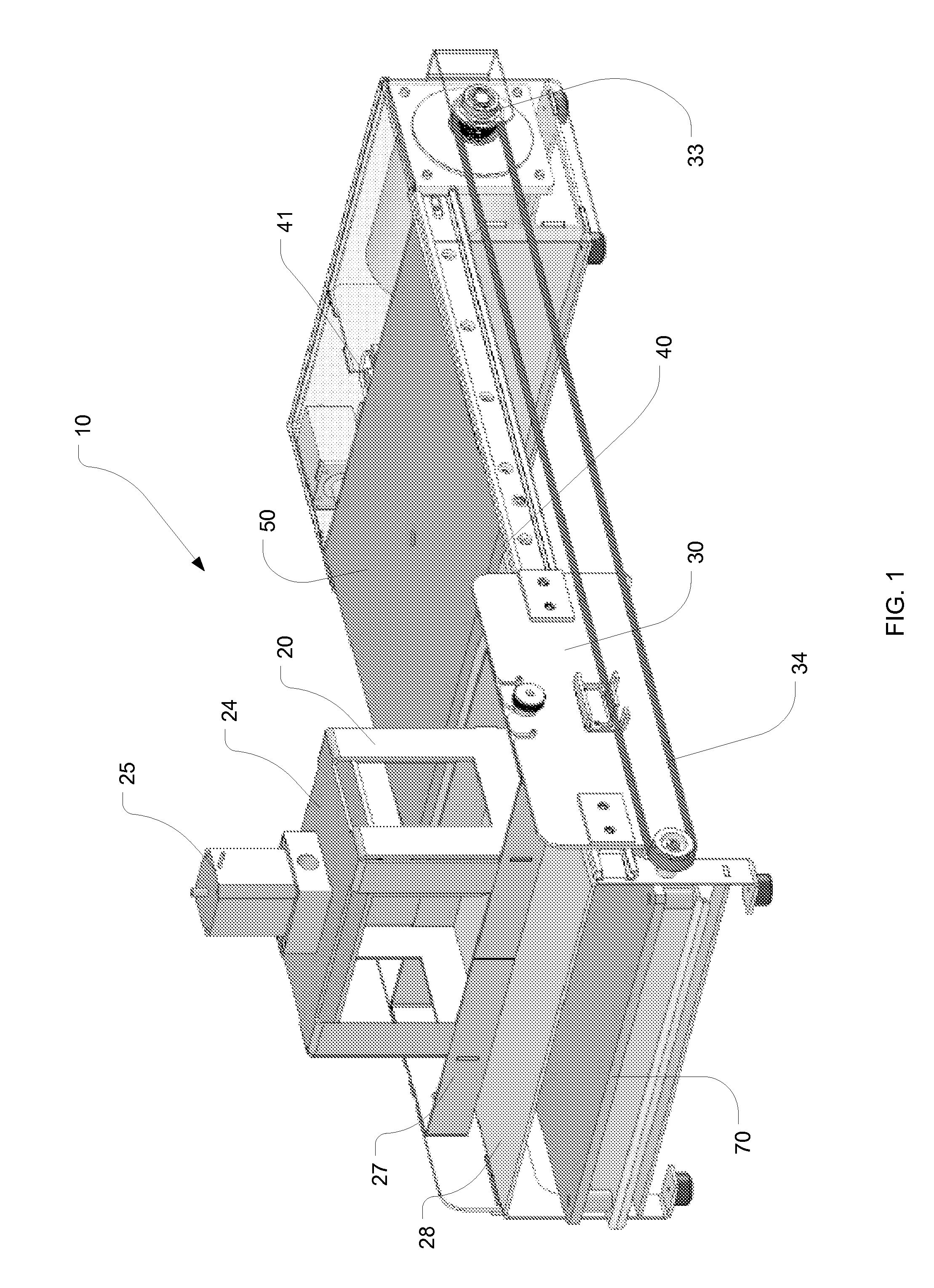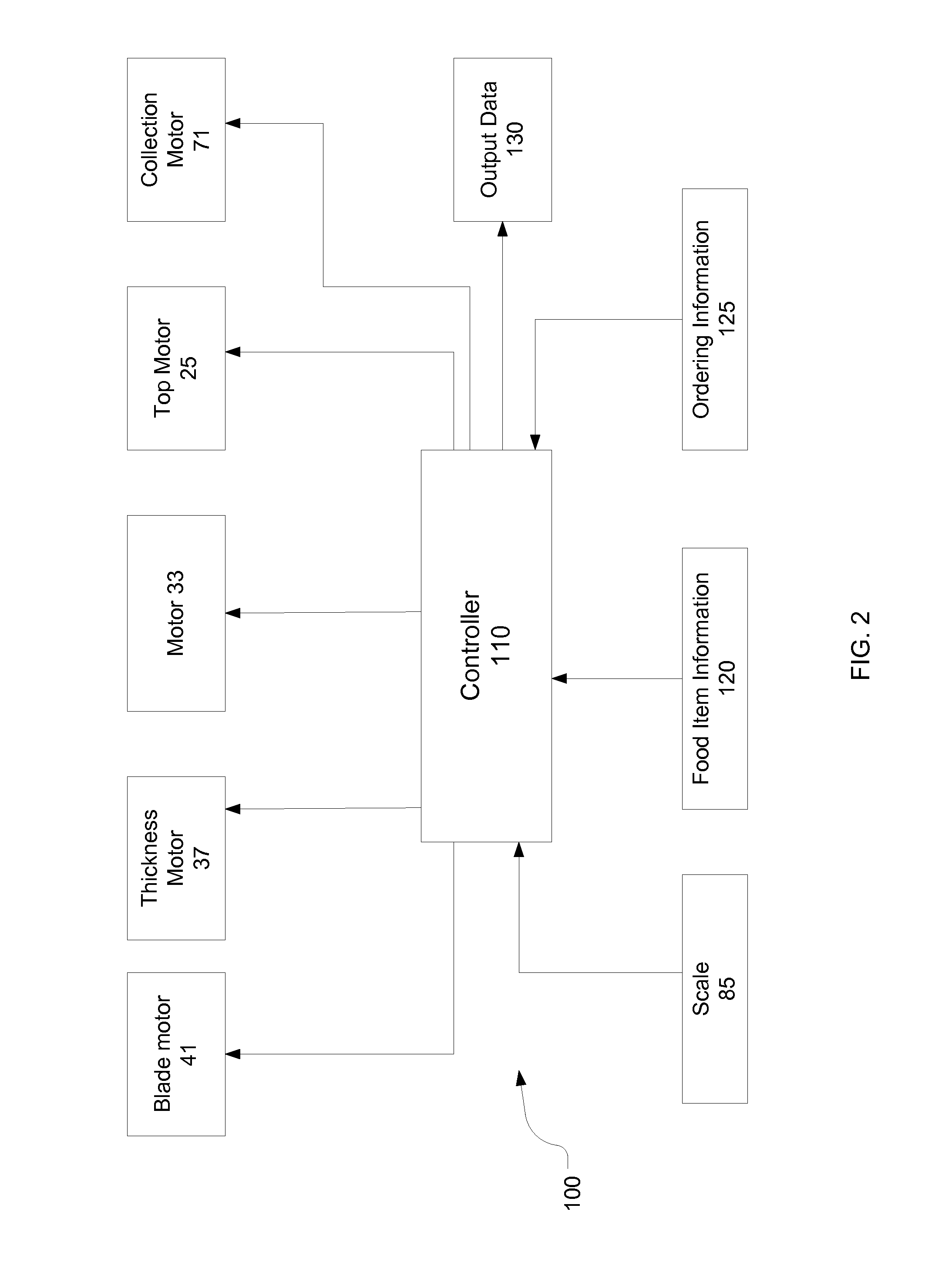Slicing Apparatus
a technology of slicing machine and blade, which is applied in the direction of sawing machine, cross-cut reciprocating saw, sawing machine, etc., can solve the problems of inability of rotary slicer to automatically stack the sliced deli product, inability to automatically stack the sliced product, and messy pile of sliced product, so as to eliminate the need for sharpening the blade. , the effect of easy replacemen
- Summary
- Abstract
- Description
- Claims
- Application Information
AI Technical Summary
Benefits of technology
Problems solved by technology
Method used
Image
Examples
second embodiment
[0087]FIG. 3 shows the slicer 200 having a reciprocating blade. In this embodiment, the food product is positioned on the top surface, and held in place using an adjustable product holder 201. The food product is placed in the opening 202 in the top cover 203. Once placed, it is held snugly in place by adjustment of the product holder 201. The food product remains in this position, as the blade moves from back and forth beneath it.
[0088]FIG. 4 is another view of the slicer 200 with top cover 203 removed. The slicer 200 has two major components, a bottom portion 220, which is shown in more detail in FIG. 5 and an upper portion 210, shown in more detail in FIG. 6.
[0089]Referring to FIGS. 4 and 5, the bottom portion 220 has two parallel synchronized acme screws 221. These screws 221 are rotated by the actuation of motor 231. As best seen in FIGS. 3 and 5, motor 231 is attached via belt 234 to one of the acme screws 221. A second belt 235 is used to couple the two screws so that they ro...
first embodiment
[0112]As is obvious from this description, this new slicer is able to operate unattended. In conventional slicers, an operator needs to manually move the tray holding the food product through the rotary blade with one hand. The operator typically uses their other hand to catch the sliced food product as it is cut by the blade. The present slicer is able to slice, stack and weigh the food product without operator intervention. With a conventional slicer, the operator must use their hand to stack the slices, even if the slicer has an automated carriage. One of the major advantages of this invention is automated stacking, allowing truly unattended operation. Automatic stacking works because the collection tray retains its position relative to the food product being sliced. In the first embodiment, the product moves across the blade, and the collection tray moves in unison below it. This simulates an operator's hand moving with and below the product while using a conventional rotary sli...
PUM
| Property | Measurement | Unit |
|---|---|---|
| thick | aaaaa | aaaaa |
| thickness | aaaaa | aaaaa |
| thickness | aaaaa | aaaaa |
Abstract
Description
Claims
Application Information
 Login to View More
Login to View More - R&D
- Intellectual Property
- Life Sciences
- Materials
- Tech Scout
- Unparalleled Data Quality
- Higher Quality Content
- 60% Fewer Hallucinations
Browse by: Latest US Patents, China's latest patents, Technical Efficacy Thesaurus, Application Domain, Technology Topic, Popular Technical Reports.
© 2025 PatSnap. All rights reserved.Legal|Privacy policy|Modern Slavery Act Transparency Statement|Sitemap|About US| Contact US: help@patsnap.com



